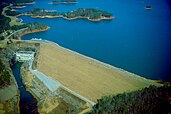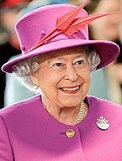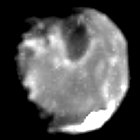From today's featured article
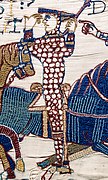
William the Conqueror (c. 1028 – 1087) was the first Norman king of England. He became Duke of Normandy in 1035, although his illegitimate status and youth caused him difficulties until he secured the duchy in about 1060. In the 1050s and early 1060s, William was a contender for the English throne, then held by Edward the Confessor. Another claimant was Harold Godwinson, whom Edward named as the next king on his deathbed in January 1066. William invaded England in September 1066, defeated Harold at the Battle of Hastings, and was crowned on Christmas Day 1066. Unsuccessful rebellions followed, but by 1075 William's hold on England was mostly secure. William's final years were marked by difficulties in his continental domains, troubles with his eldest son, and threatened invasions of England by the Danes. In 1085 he ordered the compilation of the Domesday Book, listing all landholders in England and their holdings. He died in September 1087 on a campaign in northern France. (Full article...)
Did you know ...
- ... that Buford Dam (pictured) is maintained in part by a "Chew Crew" of sixteen goats?
- ... that Joseph-Alexandre Baile argued against the separation of the parish of Notre-Dame in Montreal, declaring it to be against civil law?
- ... that by switching to the smaller typeface Retina in the stock listings of their newspaper, The Wall Street Journal was able to save $6 to 7 million annually?
- ... that there were two failed attempts to adapt Sailor Moon into a Western live-action series?
- ... that Brizlincote in Burton upon Trent, England, was formerly known as "Little Switzerland" for its charm and recreational use by locals?
- ... that Captain Archie C. Kuntze, known as the "American Mayor of Saigon", was court-martialled for living "openly and notoriously in his official quarters" with his Taiwanese girlfriend?
- ... that despite a truce, the siege of Wark continued?
- ... that a conversion plan led to the "Battle of the Century"?
In the news
- Elizabeth II (pictured), Queen of the United Kingdom and 14 other Commonwealth realms, dies at the age of 96, and is succeeded by her son King Charles III.
- Liz Truss succeeds Boris Johnson as leader of the Conservative Party and Prime Minister of the United Kingdom.
- A magnitude 6.6 earthquake strikes China's Sichuan province, leaving at least 86 people dead.
On this day
- 1141 – Yelü Dashi, the Liao general who founded the Qara Khitai, defeated Seljuq and Kara-Khanid forces at the Battle of Qatwan near Samarkand in present-day Uzbekistan.
- 1320 – Byzantine forces defeated Achaean troops at the Battle of Saint George, taking control of the Arcadia region of Greece.
- 1892 – At the Lick Observatory in California, Edward Emerson Barnard discovered Amalthea (pictured), a moon of Jupiter and the last natural satellite to be discovered by visual observation.
- 1999 – The first banknotes of the Portrait Series of the Singapore dollar were introduced by the Board of Commissioners of Currency.
- Augustin Pyramus de Candolle (d. 1841)
- Louise Lehzen (d. 1870)
- Edward Teller (d. 2003)
From today's featured list
Today's featured picture
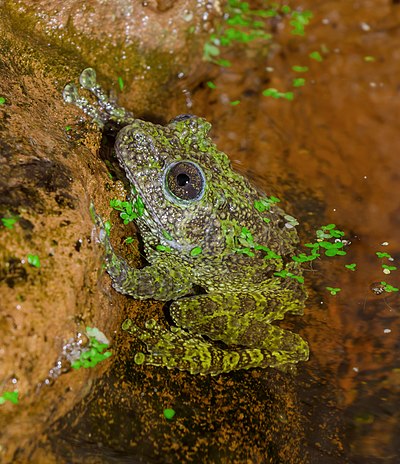
|
Theloderma corticale is a species of frog in the family Rhacophoridae. It is found in northern Vietnam and China, and possibly also in Laos. Its common name, the mossy frog, arises from the fact that its skin is a mottled green and brown that resembles moss growing on rock, forming an effective camouflage. It has large sticky pads on its toes and a soft underbelly, with a snout–vent length of 61 millimetres (2.4 in). The females grow larger than the males and can reach sizes of 8 to 9 centimetres (3.1 to 3.5 in). When frightened, it will curl into a ball and play dead. This T. corticale frog was photographed at Karlsruhe Zoo in Germany. Photograph credit: H. Zell
Recently featured:
|
Other areas of Wikipedia
- Community portal – The central hub for editors, with resources, links, tasks, and announcements.
- Village pump – Forum for discussions about Wikipedia itself, including policies and technical issues.
- Site news – Sources of news about Wikipedia and the broader Wikimedia movement.
- Teahouse – Ask basic questions about using or editing Wikipedia.
- Help desk – Ask questions about using or editing Wikipedia.
- Reference desk – Ask research questions about encyclopedic topics.
- Content portals – A unique way to navigate the encyclopedia.
Wikipedia's sister projects
Wikipedia is written by volunteer editors and hosted by the Wikimedia Foundation, a non-profit organization that also hosts a range of other volunteer projects:
-
Commons
Free media repository -
MediaWiki
Wiki software development -
Meta-Wiki
Wikimedia project coordination -
Wikibooks
Free textbooks and manuals -
Wikidata
Free knowledge base -
Wikinews
Free-content news -
Wikiquote
Collection of quotations -
Wikisource
Free-content library -
Wikispecies
Directory of species -
Wikiversity
Free learning tools -
Wikivoyage
Free travel guide -
Wiktionary
Dictionary and thesaurus
Wikipedia languages
This Wikipedia is written in English. Many other Wikipedias are available; some of the largest are listed below.
-
1,000,000+ articles
-
250,000+ articles
-
50,000+ articles
